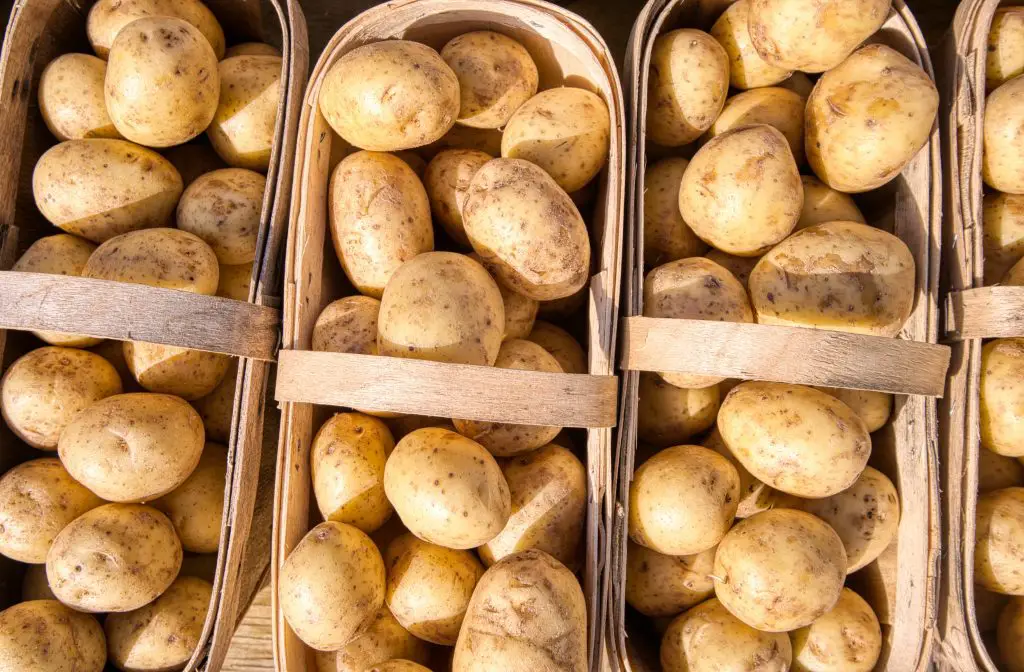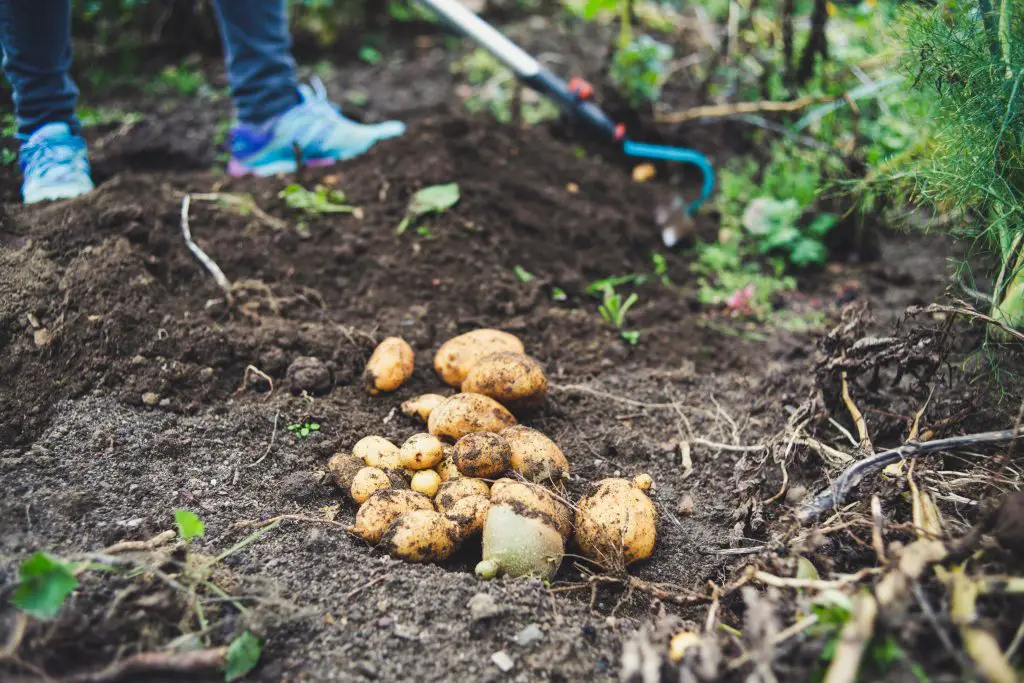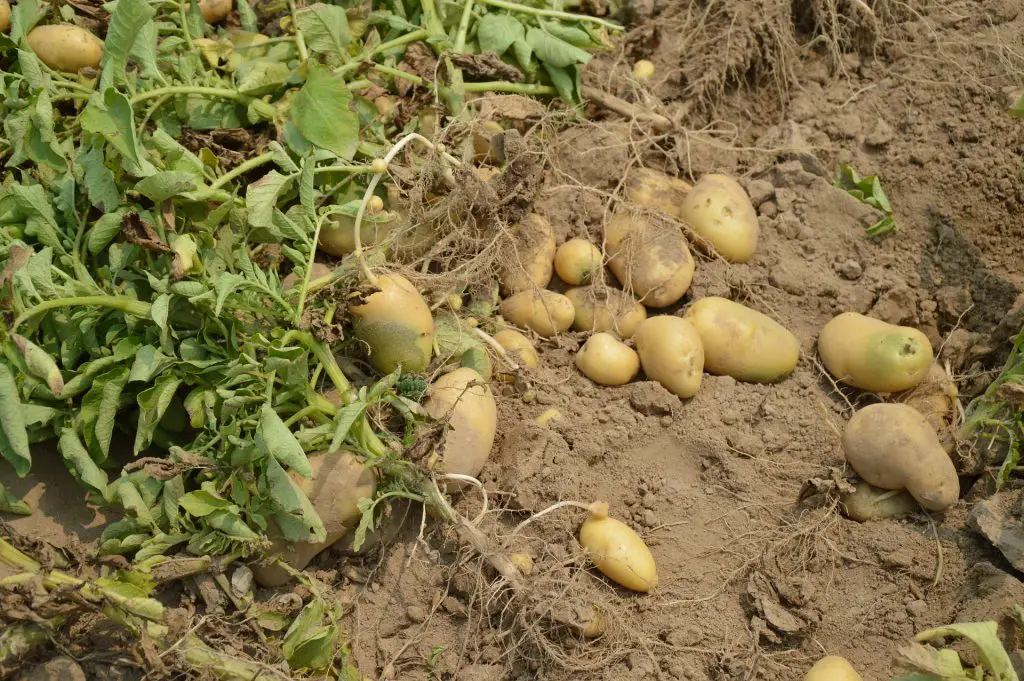What To Do With Soil After Growing Potatoes? Potatoes are one of the most popular and prolific vegetables grown in the garden at home. They produce masses of potatoes that can be stored for months on and making them very attractive to grow. However, if you are trying to grow early potatoes in growbags you may be wondering what to do with the soil after growing potatoes.
The spent soil from potato grow bags can be reapplied sparingly across a range of areas in your garden, however, we would highly recommend that you compost the spent soil before putting it back into the garden as this is one of the best ways to reduce the number of pathogens in the soil which can be problematic with potatoes.
The composting of soil has been shown to remove many pathogens from the soil as well as toxic compounds rendering them a useful fertilizer for the remainder of the garden. When doing this it is a good idea to ensure that you layer the soil evenly across the compost heap and then apply different materials above and below the soil to ensure that the soil is diluted with other materials reducing the chances of problems.

What To Do With Garden Beds That Have Had Potatoes Planted In Them?
However, if you have grown potatoes in regular garden beds it is often an impractical process to remove the soil from the garden. Therefore we recommend that you plant different types of crops to follow the potatoes to reduce the chances of a buildup of disease which can occur if you plant other members of the Solanaceae family in the same place immediately after the crop.
The members of the Solanaceae family that you should avoid are tomatoes, capsicums, eggplants, and Peppers. Ideally, these plants should not be planted in the same place for a couple of years to eliminate any chances of problems.
What Else Can You Do To Reduce Disease Problems?
Potatoes that are grown at-home should ideally be started off using certified seed potatoes rather than ones that are purchased from somewhere like the supermarket. The reason for this is that certified seed potatoes have been tested for a range of common pathogens which can have devastating impacts on the yield of the plants.
The common diseases that are often mentioned when talking about this are things like blight and black spot which can cause the tubers to rot rapidly ensuring that you do not get a very large harvest.

What To Do With Soil That Has Had Diseased Potatoes In It
If you are growing potatoes in grow bags at home and disease strikes the fix for this is quite simple to eliminate any chance of problems. The soil should be disposed of in a green waste bin to avoid any chance of contamination on your site.
However, if this occurs when you are growing potatoes in garden beds the best option is to avoid planting potatoes in the area for at least three or 4 years to ensure that any diseases that are present do not affect the subsequent crops that are grown in the same area.
In addition to this, it may also be worth fumigating the soil using species such as mustard seeds and radish seeds. This method requires you to sow the seeds and then once the plants come up and reach a reasonable height. The green manure then needs to be dug back into the soil which will help to both fertilize and fumigate the soil.
The fumigation of soil happens because of the release of gases from the breakdown of the green manure kills in most cases the majority of pathogens that are present in the soil reducing the chances of further problems.

Are Potatoes Seed More Susceptible To Disease When They Are Cut In Half?
Cutting seed potatoes in half is a great way to get more out of the seed potatoes that you purchase from the local garden center. Each chunk of potato planted that is reasonably sized will produce a similar amount of yield to a whole potato, however, there is a greater risk of disease problems when you cut the potatoes in half.
From my personal experience, I have never had a problem with cutting seed potatoes in half and it causing disease problems, however, if you have conditions that are not favorable for growing potatoes it seems likely that cutting the potatoes in half exposes the seed to a greater number of pathogens which is more likely to cause problems.
To reduce the chances of having problems if your cutting seed potatoes in half it is recommended that you plant them a little later in the season because they will tend to sprout more quickly which means that they are less likely to be affected by any soil-borne diseases. This is because the potatoes do not linger in the ground for anywhere as long as if they are planted later in the season.
About the earliest possible moment, you can plan potatoes is around 2 weeks prior to the last frost because potatoes are frost sensitive and it takes approximately 2 weeks for them to come up out of the ground and be exposed to the weather.
I hope you found this article useful and have great success growing your potatoes at home in your own garden. If you have any additional comments or questions please leave them in the section below.
Relevant Articles
Are Potatoes Legumes? If Not What Are They?
How Late Can You Plant Potatoes? (And How To Maximize The Yield)
How Long After Potatoes Flower Are They Ready?
